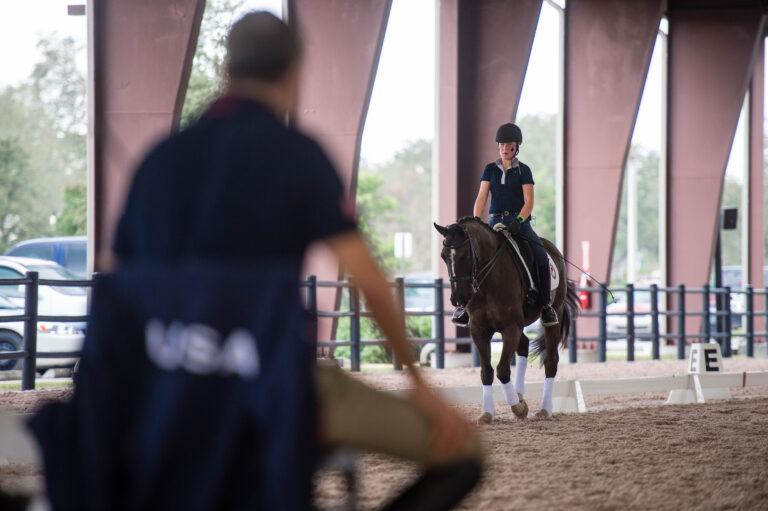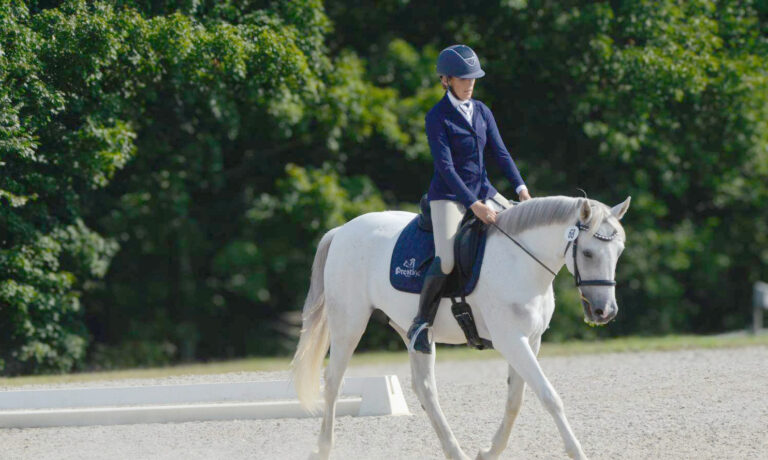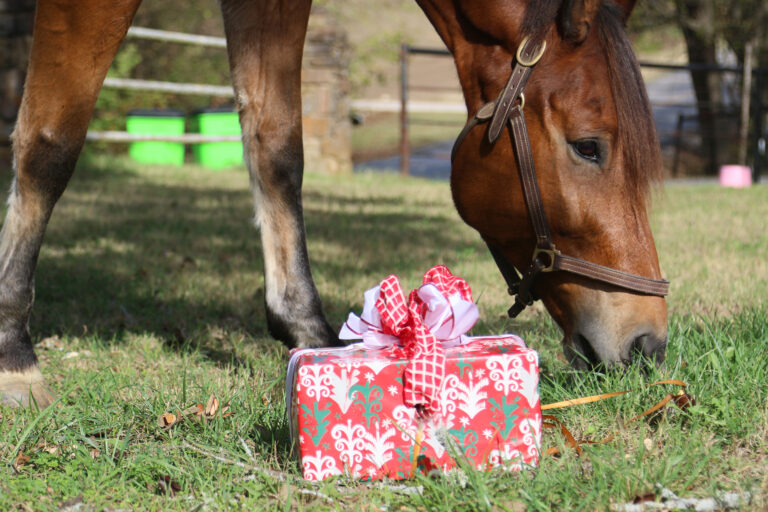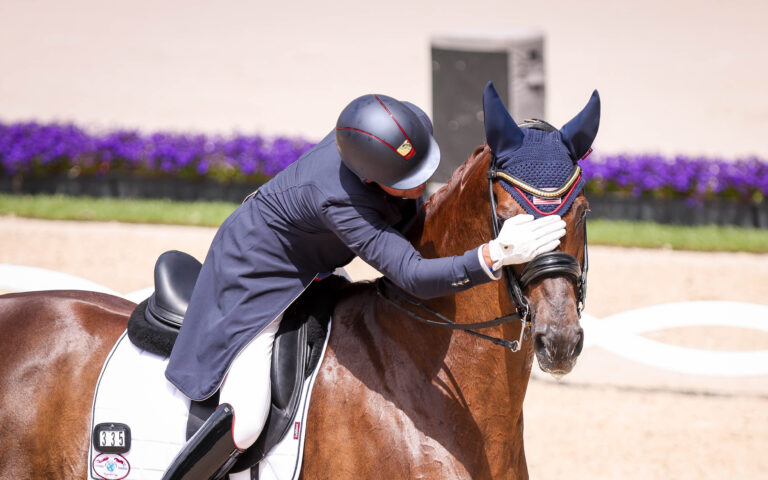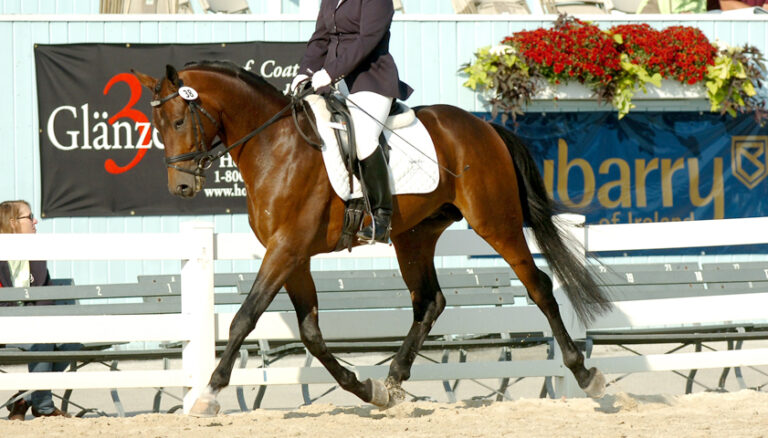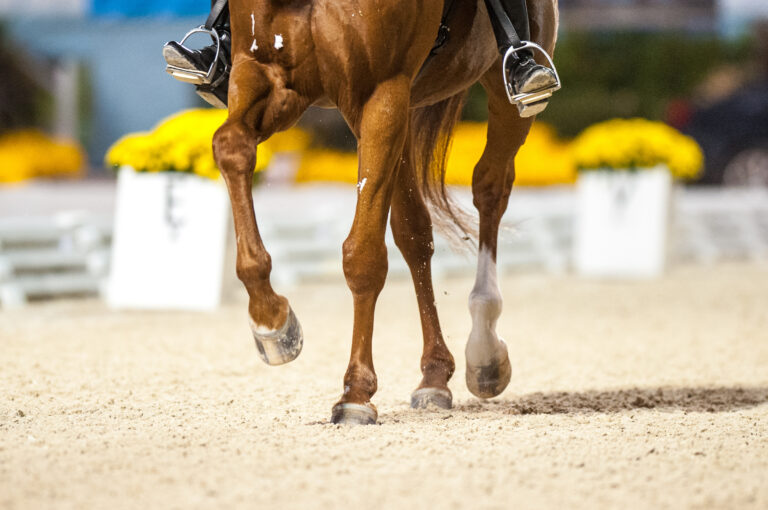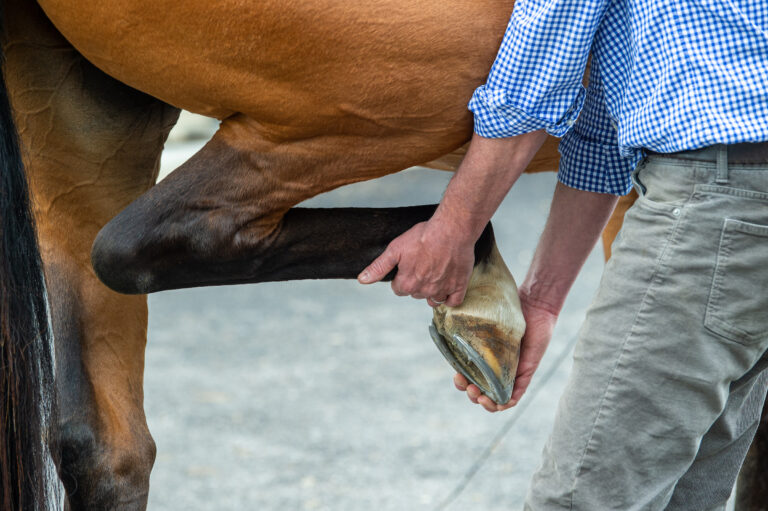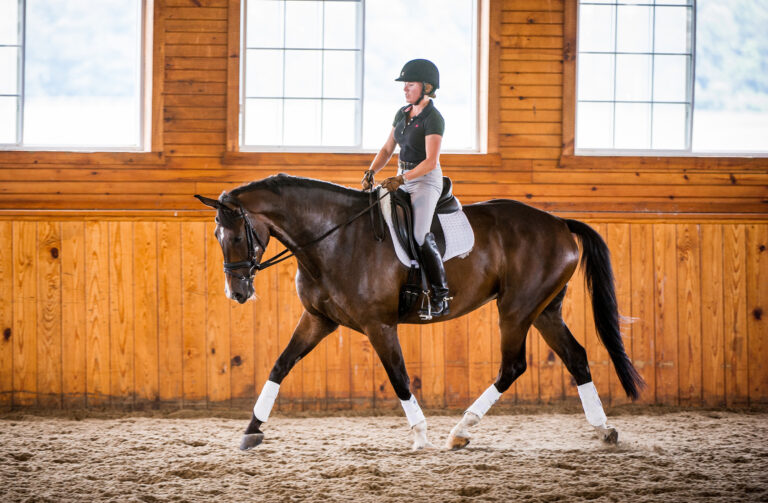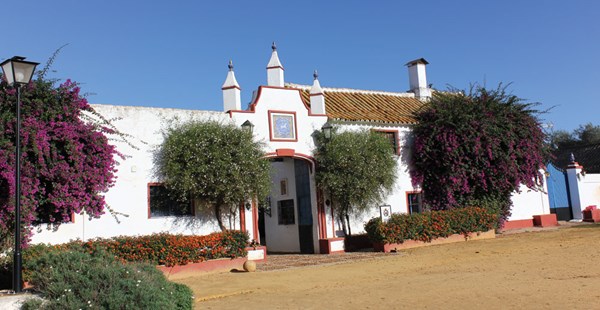
For more than a decade I have traveled from California to Spain for Andalusian equestrian adventures, which began with a fascination with the Spanish lineage of my horse, Bold Brahim (“Jesse”). On my first explorative journey in 2002 I went to Epona Equestrian Center and the 16th century hacienda of the Garcia family in the countryside of Carmona, not far from the city of Seville and the highly revered Arabian breeding farm where Jesse’s Spanish grandsire, Sidi Brahim, hailed from. I grew up trail-riding with a cowboy-at-heart father so I naturally enrolled in a train-and-trail program that included extensive trail rides in the countryside and on the beach, basic dressage training and a visit to the Royal Andalusian School of Equestrian Art in Jerez—a life-changing excursion that introduced me to world-class dressage.

As I sat on the edge of my seat at the Royal School and watched the internationally acclaimed performance “How the Spanish Horses Dance” for the first of what would become many times, I fantasized about riding the majestic Andalusian stallions in the stately arena beneath the King of Spain’s throne. Dreams do come true. A few years later, I applied to participate in a two-week intensive dressage course at the school and I was accepted. As luck would have it, my private instructor was Spain’s Olympic medalist Rafael Soto (head of the Royal School’s riding department) assisted by his full-time student at the time, Vivi Garcia. Under the tutelage of a master, I was fortunate to experience dressage training at its finest with some of the school’s show horses in the same iconic arena where I had first been an awestruck spectator. Friendships were forged, my equestrian world expanded beyond belief and I left a piece of my heart in Spain. A second course at the Royal School soon followed as well as numerous return visits and additional dressage training at Epona.
When my most recent trip was planned to attend a clinic with Rafael and Vivi at Epona in the fall of last year, a group of dressage riders in my southern California horse community learned of my travels and became intrigued. After a few storytelling get-togethers, USDF senior judges Louise Koch and Carole Hoffman, along with former hunter-jumper riders Gayleen Marmarelis and Val Kelly, were on board to join the fun to experience Spain and the country’s beloved horses firsthand.
Getting There and Where to Stay
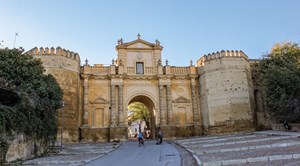
What lies ahead of the long indirect trip from the United States to the region of Andalusia in southern Spain is always worth the travel time and jet lag. After arriving in the city of Seville, the last travel leg is an Epona van transfer from the airport or train station to the final destination of Carmona—one of the oldest continually inhabited cities in Europe.
Located in the heart of Andalusia, the historic quarter of old Carmona is steeped in tradition and whispers of ancient civilizations. Beyond the fortress walls that date back to the Roman Empire, visitors are transported back in time on narrow, winding cobblestone streets lined with centuries-old noble palaces, churches and convents. The carefully preserved architectural gems are a harmonious blend of various cultural influences and styles (Roman, Gothic, Renaissance, Baroque and Moorish) that pay homage to artistic heritage and serve as a regal backdrop to the restaurants, shops and residences of modern-day life. At the end of the journey, in the center of the city, is the Alcazar de la Reina hotel—a beautifully restored 14th century palace that awaits Epona clinic participants and is an enchanting home-away-from-home for the week.
The Clinic
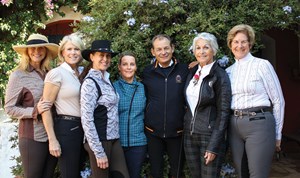
Nestled between olive groves and sunflower fields, Epona is home to more than 50 horses and boasts an Olympic-sized covered dressage arena adjacent to a large multi-purpose uncovered arena. The equestrian center and staff are accredited by the British Horse Society, the Association of British Riding Schools and the Spanish Equestrian Federation. Whether you are a beginner, intermediate or advanced competitive rider, there are exceptionally trained horses with kind, sensitive and willing demeanors at Epona for every level of dressage enthusiast. (All
of the horses have a solid dressage foundation with lateral movements, and a large number perform high-level advanced movements.)
Following an informative welcome dinner at the hotel and time to settle in the night before, the first day of the six-day program started with a meeting with Vivi (Epona’s master horse trainer) to discuss everyone’s riding experience before riders were matched with horses. Each participant rode more than one horse throughout the week to allow the horses to rest and to ensure the best matches as the work progressed.
“I like to ask people what they are working on at home, why they are here and what they want to achieve,” Vivi said. “Then I consider the size of the people and what they like before assigning horses to them. We have been doing this for so many years that we usually know who is a good fit. But if, for some reason, we find that we do not have a right match, we make the necessary changes.”
Working students along with a professional instructor prepared the assigned horses. The group was divided into pairs with similar riding levels, and the day’s training, which included two one-hour lessons (one before and one after lunch— a leisurely feast of home cooked Andalusian fare), commenced immediately.
“It is important that riders start getting to know the horses and get a feel for them right away,” said Vivi. “Some things we may do differently with the PRE horses than what they are familiar with, so I give tips on how to ride this particular breed. They have a conformation that is natural for collection, and they don’t require a lot of effort to bring them together, so we can be more sensitive, ride lighter and be very quiet from the seat. People tend to override them and the horses get overwhelmed.”
In preparation for the two days of individual lessons with Rafael (a total of four sessions per student), the goals for Vivi and her sister, Cati Garcia-Dow (chief instructor) were for the advanced riders who were Grand Prix level riders to learn new exercises and training methods and for the less advanced and intermediate riders to improve and advance, which everyone did. Exercises that Rafael specifically uses were incorporated into their lessons with a focus on lateral movements, long-and-low work (at all gaits) and getting the horses going uphill and light in front. When training began with Rafael, everyone was familiar with his approach and subsequently benefited tremendously in the private sessions with him. “It is very convenient for me that the riders are prepared in my teaching methods by the instructors at Epona in the days before the actual clinic,” said Rafael. “This way we can carry straight on with the interesting work,” he said.
Rafael’s exceptional teaching talent is on par with his master riding and horse training. His passionate, tenacious and methodical teaching style is balanced with patience, sensitivity and his easygoing, gentle demeanor. Regardless of the level of the riders, he pushed every student to her riding limit, though he never asked for more than anyone was capable of giving. While doing so, he fostered extreme confidence and a solid connection between the students and their horses.
“For me, teaching dressage to all levels of riders is a true vocation,” he said. I especially enjoy meeting and training riders from all over the world in the relaxed and friendly atmosphere of Epona. Above all, I love the Epona horses. They are great schoolmasters and perfect for teaching correct dressage equitation. It is very difficult to find such an ideal group of horses that are all together in one place anywhere!”
Time passed quickly at Epona as our group transitioned from getting acquainted with the horses and dressage basics to, depending upon the level of rider, passage, piaffe, flying changes, pirouettes and, my personal favorite, the elegant traditional Spanish walk. “Where else in the world can amateurs have the opportunity to ride trained school horses who can piaffe and passage?” asked Louise.
The week culminated with a champagne toast, diploma presentations and a DVD viewing of Rafael and his late horse, Invasor, competing in the Olympic games in Athens (2004). Rafael commentated and pointed out the unrequired complexities of their exquisite Grand Prix freestyle test, which included half pass in passage, pirouette in piaffe and a transition from extended canter to piaffe.
Beyond the Clinic

The Spanish culture and the passion of the Spanish people are as captivating as the country’s revered horses. The week was not only equestrian bliss but also a splendid immersion in the artistically and historically rich Andalusian lifestyle.
The second day of our visit included an hour-long road trip to Jerez and the Royal Andalusian School of Equestrian Art to see the weekly performance of “How the Spanish Horses Dance” that captivated me many years ago. Later in the week, we visited a Carmona tack shop to indulge in some of the fine handmade leather goods that Spain is renowned for. A night out on the town in nearby Seville included another tack-store shopping excursion, dinner and a flamenco show—a must-see for anyone who visits this region of Spain. The art of flamenco is one of the most soulful displays of the passion and spirit of the Andalusian people. It is an emotionally intense, personal expression of the joys and sorrows of the artists’ lives interpreted through dance, singing and Spanish guitar music. According to legend, it was originally performed by gypsies hundreds of years ago in Andalusia.
Many evenings were spent strolling the old stone streets of Carmona, marveling at ancient architecture and indulging in local cuisine after long, enjoyable days at Epona. As with all things Andalusian, the region’s food and wine are also rooted in tradition. Food introduced during Arab rule centuries ago—rice, lemons, oranges, olives, grapes, almonds, many vegetables and spices—have remained diet mainstays. Sauces spiced with cumin and saffron, salads with sherry vinegars, gazpacho and grilled and fried seafood from the nearby Atlantic Ocean and Mediterranean Sea are typical fare along with locally made cheeses and olives from the region’s abundant groves. Tapas (small portions of food for sharing) are also a culinary favorite, and black Iberian ham from the region’s mountains is one of the locals’ most savored delicacies. Of course, no meal would be complete without Spanish wines and sherry (known as Xerez in Roman times, then Sherrish under Moorish rule), which originated in Jerez (home to Rafael and the Royal School).
Viva España
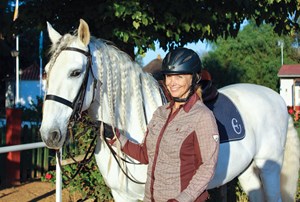
Though I am accustomed to traveling to Spain on my own, I enjoyed sharing one of my treasured Spanish equestrian voyages with dressage enthusiasts from home. I especially appreciated being on the sidelines when Val and Gayleen delighted in experiencing some advanced dressage movements for the first time in Spain just as I had. According to Gayleen, “Epona exceeded all of my expectations. The Garcias are wonderful, warm hosts, and I felt very welcome by all of the staff. The horses were well trained and fun to ride, and the instruction was a great foundation for the last two days with Rafael. I have used much of what I learned with great results on my own horse. And it was the perfect way for Val and me to celebrate our birthdays!”
What was initially intended to be a one-time horse adventure to the Iberian Peninsula that was prompted by my curiosity has since become an affinity for Spain that has greatly influenced my life. The open-armed, passionate Spanish people and the magnificent Andalusian horses who captured my heart long ago have gifted me with some of my finest life experiences both in and out of the saddle.

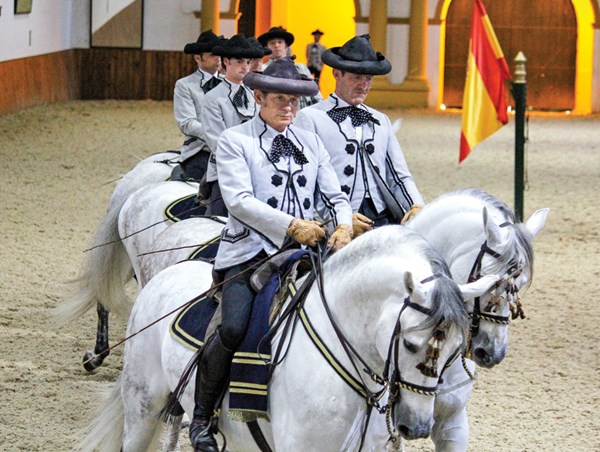
Diane Barberlives in Los Angeles and is a freelance lifestyle writer and interior designer. She is a dressage enthusiast with a passion for Spanish horses and travels to Spain frequently to train with Rafael Soto and Vivi Garcia.

For more information, visit eponaspain.com, alcazar-reina.es and visitasevilla.es.


